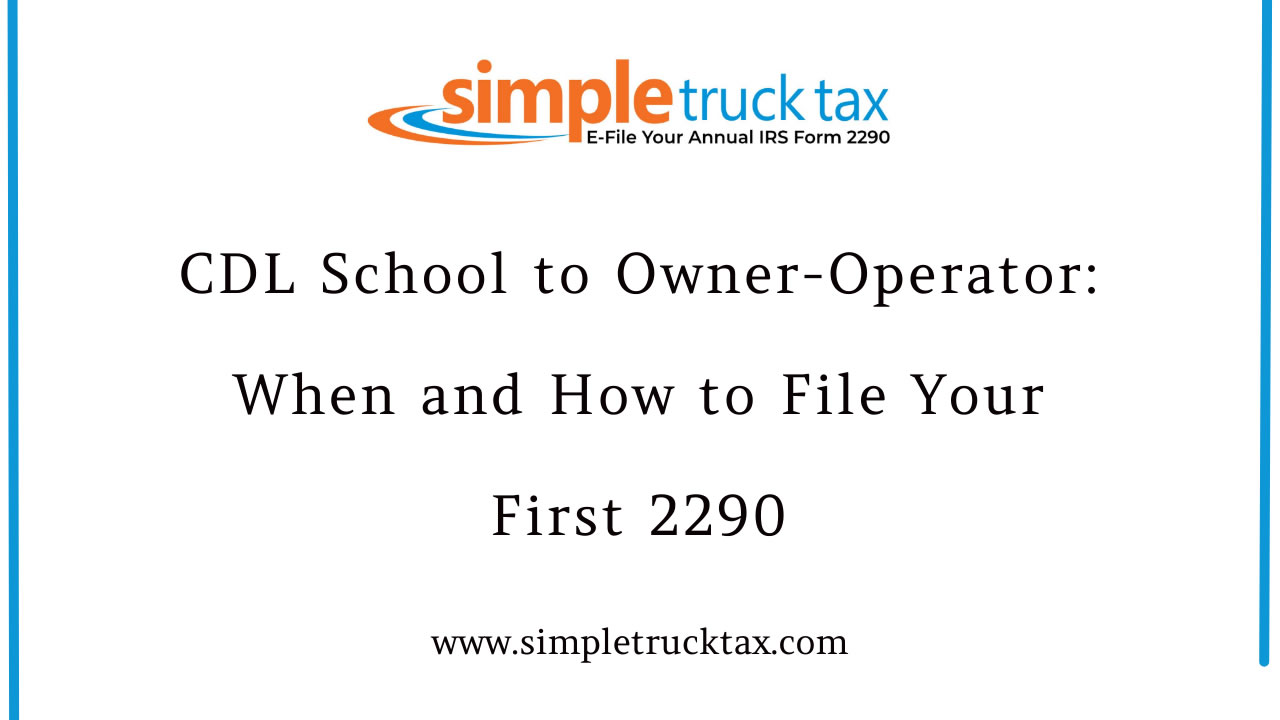
CDL School to Owner-Operator: When and How to File Your First 2290
Transitioning from CDL school to becoming an independent owner/operator is a significant achievement in the trucking industry. It's worth noting that this qualification leads to self-management responsibilities, including tax obligations.
One of the tax returns relevant to you as a truck owner is the IRS Form 2290, often referred to as Heavy Highway Vehicle Use Tax (HVUT) or simply “2290.” If you’re getting ready for your first year as owner/operator, this is what you should know about filing your first 2290s.
What Is Form 2290 and Who Needs to File It?
Form 2290 is mandatory for individuals who possess a heavy highway motor vehicle with a gross weight of 55,000 pounds or greater and use this vehicle on public roads and highways. This will most likely apply to you as a new owner/operator.
If you have either purchased your first truck or are leasing one with a buyout clause, this form is one of the requirements and it needs to be done together with the payment of HVUT annually.
Not complying can lead to legal issues and in some cases, may hinder their ability to register the vehicle in the DMV.
When to File Your First 2290 as a New Owner-Operator
The due dates for filing your Form 2290 hinges on the commencing date (start date) of activities. As pertains to the IRS, the tax year for HVUT is valid between 1st July to 30th June. In case you are planning to hit the road in July, then you will be required to file by 31st August.
Alternately, if your operations start later in the year, your due date will be last day of the month following the month you first put the truck into use.
If for instance, your truck goes live in November, then your Form 2290 would be due by 31st December.
How to File Form 2290: Step-by-Step Guide
For some, it may seem like an uphill task. The good news is that it does not have to be that complicated. The Form 2290 can be filed either via mail, e-file, or completing a paper form. In case you seek faster processing, most truckers prefer e-filing through an IRS-authorized provider.
Here’s how it goes:
- Compile basic business information such as the legal name, address, contact, EIN, pertinent information on trucks, and the respective VIN.
- Based on the specifics of the truck, calculations of the respective HVUT needs to be done.
- Complete the online form, then pay the tax via direct debit, bank account, or credit card or stone cold via EFTPS.
- Subsequently the Schedule 1 can be downloaded and it will become requisite for vehicle registration.
Tips Before You Hit the Road
Confirm that your Employer Identification Number (EIN) is active before you start filing; new EINs may require up to two weeks to be active for e-filing. Additionally, carry a verified copy of Schedule 1 with you at all times as a receipt since this is needed when renewing your truck registration or getting new tags.
Don't forget that staying compliant is not only about evading penalties; it's about ensuring the smooth operation of your business.